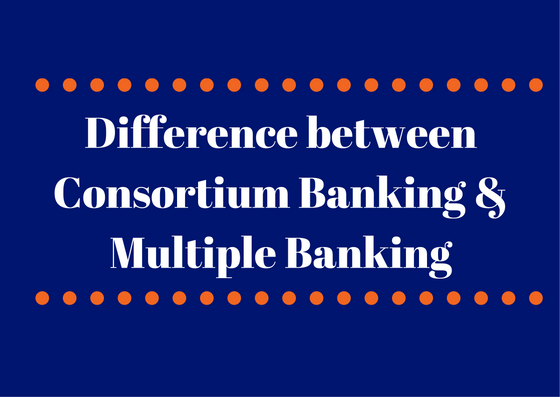Comparing Multiple Banking and Consortium Banking: Understanding the Variances

Multiple banking and consortium arrangements are two common methods of financing used by businesses to obtain funds from multiple lenders. Each method has its own structure, advantages, and considerations. In this article, we'll explore the differences between multiple banking and consortium arrangements.
Multiple Banking:
• Definition: Multiple banking involves obtaining funds from several banks or financial institutions individually.
• Structure:
- - Each lender provides a separate loan facility to the borrower.
- - The borrower negotiates terms and conditions independently with each lender.
• Advantages:
- - Increased flexibility in negotiating terms and conditions.
- - Diversification of funding sources reduces dependency on a single lender.
- - Competitive pricing as lenders compete to offer the best terms.
• Considerations:
- - Administrative burden increases as the borrower manages multiple relationships.
- - Coordination challenges may arise, especially in cases of amendments or waivers.
Consortium:
• Definition: A consortium is a financing arrangement where a group of lenders jointly provide funds to a borrower under a single facility agreement.
• Structure:
- - Multiple lenders pool their funds to provide a single loan facility.
- - The borrower negotiates terms and conditions with the lead arranger or agent bank on behalf of the consortium.
• Advantages:
- - Simplified administration as the borrower deals with a single facility agreement and point of contact.
- - Enhanced coordination among lenders, reducing the risk of conflicting demands.
- - Greater capacity to handle large financing requirements.
• Considerations:
- - Less flexibility in negotiating terms compared to multiple banking.
- - Decision-making may take longer due to the involvement of multiple parties.
Key Differences:
- - Structure: Multiple banking involves individual loan facilities, while consortium involves a single facility with multiple lenders.
- - Negotiation: In multiple banking, terms are negotiated with each lender separately, while in a consortium, terms are negotiated collectively.
- - Administration: Multiple banking requires managing multiple relationships, while a consortium streamlines administration with a single facility agreement.
Both multiple banking and consortium arrangements offer advantages and considerations for businesses seeking financing. Understanding the differences between these two methods is crucial for borrowers to choose the most suitable financing structure for their needs.
